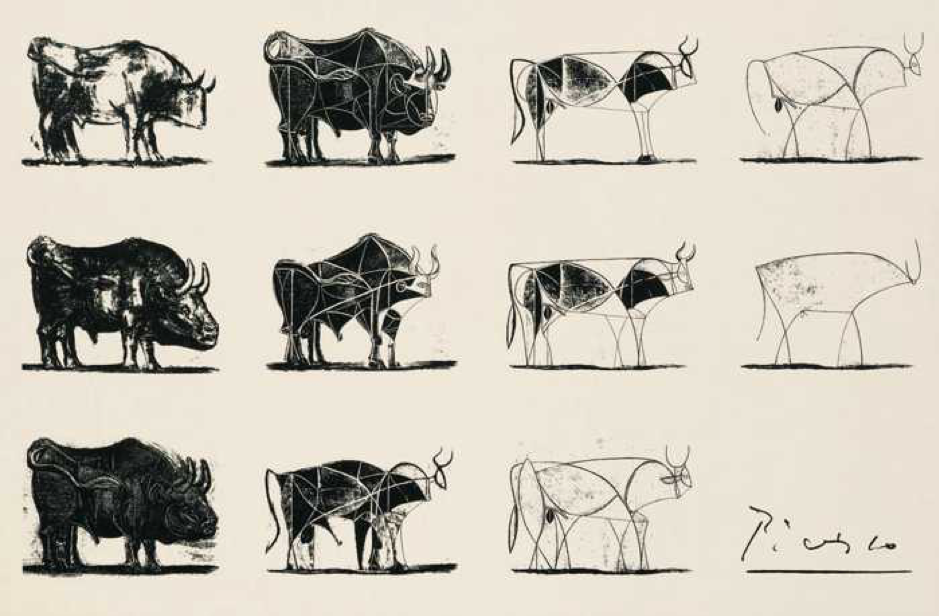
Widespread change demands approaching human intelligence like Pablo Picasso approached his art. He knew that we are capable of sensing and feeling as well as seeing. He knew that we use all three of our brains – head, heart and gut – to come to decisions.
I explore this in my book Shift the Work. The brain in your head controls and coordinates your actions and reactions, which allows you to learn, think, and store memories. The brain in your heart beats to pump blood throughout your body, which transports nutrients and oxygen to cells. The brain in your gut regulates your serotonin level, which dictates your mood and behavior.
Picasso was instinctively in touch with his three brains.
Picasso was a complete artist, a groundbreaker in different visual arts, and someone who had a unique way of looking at the world. His approach is one that we should perhaps explore ourselves in order to more fully engage in the world and, by extension, at work. His purpose was to find the essence in the visual world. Your purpose is to find the essence of what speaks most to you at work and in life.
Starting with a Plan, or Beginning at the End
Artists, before embarking on a work of art, traditionally use lithographs to practice the painting or sculpture they hope to create. Each lithograph is an effort to tweak, or fine-tune, a specific element.
Pablo Picasso took the opposite approach, as you can see from this illustration.

In creating The Bull, the master’s first lithograph was a polished rendering of a bull. He started, in other words, with the end.
Then, he began to work backward from this fully realistic image he created. He played with the bull’s anatomy by adding, subtracting, and changing certain parts. The goal was to strip the bull down to its essence, or spirit.
We too must start from the end—the premise that all three brains play a role in our engagement at work—rather than acting like traditional artists by slowly piecing together a solution. Science proves that all three brains work in tandem.
Ready to Shift?
I’ve written a white paper that describes how you can use brain science to be happier at work. It’s called “How Brain Science Helps Engagement” and it will give some some clear strategies to shift your work.







